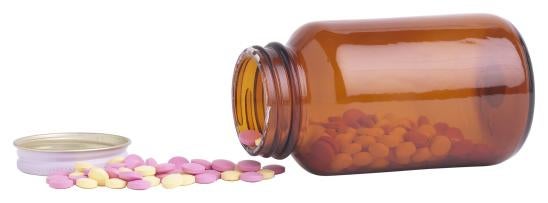Rule requires most manufacturers to change government pricing methodologies, calculations, and systems.
On July 23, the Health Resources and Services Administration (HRSA) of the U.S. Department of Health and Human Services (HHS) published a regulation[1] increasing the number of entities to which pharmaceutical manufacturers must sell orphan drugs at statutory ceiling prices under the 340B drug discount program, and complicating the determination of eligibility to purchase these drugs at the 340B price. This regulation conditions the ability of certain hospitals to purchase orphan drugs at the 340B price on implementation of costly new systems for tracking drug use and requires virtually every brand drug manufacturer to change its government pricing methodologies, calculations, and systems.
340B Program Background
The 340B drug discount program is a voluntary program created by section 340B of the Public Health Service Act, 42 U.S.C. § 256b, and implemented through a pharmaceutical pricing agreement (PPA) between manufacturers and HHS. Manufacturers opt into the program by signing these agreements and assuming the obligations set forth in their terms, which are specified by statute and linked, in many respects, to the terms of the Medicaid drug rebate statute. At the core of the agreement is the obligation to charge covered entities no more than a statutory ceiling price for drugs covered by the statute, which are defined by the term "covered outpatient drug" in the Medicaid statute.
Section 7101 of the Affordable Care Act (ACA) expanded the categories of hospitals eligible to purchase at the 340B ceiling price to include freestanding cancer hospitals, sole community hospitals, rural referral centers, and critical access hospitals. The ACA, as amended, simultaneously limited these hospitals' participation in the program by excluding "a drug designated by the Secretary [of HHS] under section [526 of the Federal Food, Drug, and Cosmetic Act (FFDCA)] for a rare disease or condition"[2] from the definition of "covered outpatient drug."
Orphan Drug Rule
HRSA's regulation, codified at 42 C.F.R. part 10, includes a new section 10.21 (the Final Rule or the Orphan Drug Rule), which establishes standards for determining when the statutory exclusion applies, i.e., when a drug designated under section 526 is excluded from the definition of "covered outpatient drug."[3]
The Final Rule interprets the statutory exclusion from manufacturers' obligations under their pharmaceutical pricing agreements as being limited to purchases of designated drugs when used by their customers to treat orphan indications. As a result of this regulatory limitation, the Final Rule requires manufacturers to charge the newly added hospitals no more than the statutory ceiling price for drugs designated as orphan drugs when these drugs are used for nonorphan indications. At the same time, the Final Rule allows an affected hospital to purchase drugs at the 340B price only if the hospital has developed a system for tracking outpatient use of a purchased drug that satisfies the requirements of the Final Rule.
HRSA's regulatory requirements are predicated on an interpretation of congressional intent underlying this provision of the ACA, which ties the definition of "covered outpatient drug" under the 340B drug discount program to the scope of other unrelated benefits of orphan drug designation, such as marketing exclusivity and tax credits. However, there are other indicia that Congress did not intend the orphan drug exclusion to be as narrow as HRSA has now declared through rulemaking. When asked to clarify the scope of the exclusion for all the newly added hospitals, Congress instead removed children's hospitals (originally subject to the orphan drug exclusion in the ACA) from the provision and restated the exclusion for the rest.[4]
Legislative Rulemaking Authority
Congress has not yet delegated authority to HRSA to promulgate substantive regulations that set standards for determining the scope of manufacturers' obligations under the statute or that impose new duties on manufacturers not specified in the terms of their agreements. The only authority that Congress has previously delegated to HRSA to promulgate regulations is the limited authority provided in section 7102 of the ACA, which allows HRSA to issue the following: 1) regulatory standards and methodology for calculating ceiling prices; 2) regulations establishing standards for the imposition of civil monetary penalties; and 3) a regulation establishing an administrative process for the resolution of claims.
HRSA has called the Orphan Drug Rule a "clarification" of the statutory exclusion; however, the rule imposes new obligations on all stakeholders. It requires manufacturers to include in the program drugs designated under section 526 of the FFDCA and concurrently allows affected hospitals to purchase them at the 340B price, under certain circumstances, and then establishes standards and requirements for determining those circumstances.
340B Entity Implementation Issues
In order to ensure that drugs used by covered entities for orphan diseases or conditions are excluded, the Final Rule provides that covered entities may not purchase designated orphan drugs for nonorphan indications under the 340B drug discount program unless they provide HRSA with assurances that they have systems capable of identifying and tracking the use of designated drugs in treating their patients and transmitting the data to their purchasing systems. Thus, a sale of a particular drug to a particular affected hospital could be classified as purchased under the 340B program or outside the 340B program, depending on whether the purchaser 1) has informed HRSA that it has a system capable of complying with the rule's requirements and 2) uses the drug to treat a patient for an orphan disease or condition.
Because the 340B program is an outpatient program only, hospitals must distinguish between drugs purchased for inpatient and outpatient purposes. HRSA allows hospitals to have a single physical inventory and maintain separate accounts for inpatient purchases and outpatient purchases, and many hospitals have split-billing systems that order 340B drugs only as needed under the program. The same rules apply when contract pharmacies order drugs to fill prescriptions of 340B hospital patients and the hospital purchases drugs to replenish the pharmacy's inventory.
However, hospitals' existing 340B purchasing systems and pharmacy prescription data do not currently include hospital billing codes or other information from patients' medical records indicating the diseases or conditions for which drugs are prescribed. Thus, it may be some time before hospitals seeking to purchase orphan drugs for nonorphan indications at 340B prices are able to comply with the requirements of the Orphan Drug Rule. Due to the difficulties in satisfying the requirements, some affected hospitals may choose to purchase all of their orphan drugs outside the 340B program if they cannot or do not wish to develop a compliant tracking system. Alternatively, some hospitals may choose to have certain of their facilities purchase outside the 340B program.
The Orphan Drug Rule provides for acceptable "alternate" tracking systems if HRSA approves such systems, but the rule does not provide hospitals with the standards for what would be acceptable to ensure compliance. It also does not appear that manufacturers will have any advance insight into the systems or an opportunity to comment on them. Additionally, the Final Rule does not offer assistance to stakeholders on how contract pharmacies can ascertain from prescription information whether a patient of a 340B hospital has been prescribed a drug to treat an orphan indication or some other indication.
Alternatives for Hospitals
Hospitals affected by the Orphan Drug Rule, such as rural referral centers, may also qualify for 340B participation as disproportionate share hospitals, which are not subject to the rule. In that case, they may choose not to satisfy the requirements of the rule (applicable to rural referral centers) but would be prohibited from purchasing outpatient drugs outside the program, such as those carved out for Medicaid, through group purchasing organization (GPO) agreements (applicable to disproportionate share hospitals).
For most of the new categories of hospitals, individual entities may purchase orphan drugs outside the program under GPO agreements and benefit from the discounts available through those agreements. Thus, they are not disadvantaged by the 340B drug discount program if they cannot or are unwilling to satisfy the requirements to purchase orphan drugs under the program. However, for freestanding cancer hospitals, the Final Rule maintains the statutory prohibition against purchasing covered outpatient drugs through GPO arrangements. If these hospitals do not comply with the regulatory requirements, they must purchase orphan drugs in the open market or negotiate contracts with manufacturers.
Manufacturer Government Pricing System Issues
Based on the Final Rule, the classification of a manufacturer's sale as a 340B program sale for purposes of the manufacturer's drug price reporting obligations depends on each eligible hospital's compliance with the rule's requirements. That means a manufacturer's operations must code each affected hospital and, in some cases, facilities within a medical center to determine whether the purchase of an orphan drug for a nonorphan indication is under the program or outside the program. These codings can change quarter to quarter as 340B hospital entities elect either to start or stop using the required tracking systems. Likewise, wholesalers processing invoices must be provided with information that allows them to know when a hospital is eligible to order an orphan drug under the 340B agreement at statutory ceiling prices (as opposed to under a GPO agreement, other contract, or open market), and the manufacturer's chargeback validation system must be able to differentiate as well. Otherwise, a manufacturer could easily and inadvertently provide 340B pricing outside the program, which could trigger a best price under the Medicaid drug rebate program and simultaneously drive down the quarterly 340B statutory ceiling price. Many manufacturers' current government pricing systems seek to identify best price-eligible sales at the class-of-trade level, with sales of orphan drugs to 340B entities coded for inclusion in best price, while sales of nonorphan drugs to these same entities are excluded from best price. Manufacturers of orphan drugs must now develop solutions that permit identification of the eligible and ineligible price points necessitated by the Final Rule.
Since the inception of the Medicaid drug rebate program, the Centers for Medicare and Medicaid Services (CMS) has refused to consider all transactions with covered entities to be exempt from best price and—in the absence of a clear statutory provision, such as the exemption of inpatient drug prices paid by disproportionate share hospitals—it is risky for manufacturers to assume all outpatient sales of orphan drugs to 340B eligible hospitals will be exempt from best price. Currently, for example, CMS's proposed government pricing rule excludes from best price only "[p]rices charged under the 340B drug pricing program to a covered entity described in section 1927(a)(5)(B) of the Act."[5]
Off-Label Use
The Final Rule does not answer comments about concerns with off-label use. The Final Rule states that a drug must be approved by the Food and Drug Administration for marketing to be in the program; however, it does not answer the question of whether a drug should be excluded if it is designated for an orphan indication, approved only for a nonorphan indication, but used by a covered entity off-label for the designated orphan indication. The Final Rule also does not indicate whether a manufacturer with a product approved only for an orphan indication will be deemed to be selling the product to a hospital for off-label use if it provides the 340B price for that off-label nonorphan use.
Implications
Hospitals added to the 340B program by the ACA (other than children's hospitals) need to review their existing systems and modify them to satisfy their obligations under the Final Rule before they can purchase orphan drugs under the program. Manufacturers need to review their drug price reporting systems to ensure they are able to identify when a covered hospital is purchasing orphan drugs outside the program to avoid inadvertently setting their best price at the 340B price.
[1]. Exclusion of Orphan Drugs for Certain Covered Entities Under 340B Program, 78 Fed. Reg. 44,016 (July 23, 2013) (to be codified at 42 C.F.R. pt. 10), available here.
[2]. 42 U.S.C. § 256b(e).
[3]. Exclusion of Orphan Drugs, supra note 1.
[4]. See Medicare and Medicaid Extenders Act of 2010, Pub. L. 111-309, § 204.
[5]. Medicaid Program; Covered Outpatient Drugs 77 Fed. Reg. 5318, 5363 (Feb. 2, 2012) (emphasis added), available here.





 i
i

